Quick Summary
This guide explains how to create a digital signature from start to finish. You’ll learn what digital signatures are, how they work, and how to make yours legally binding. SignWell makes the process simple with secure e-signatures, clear audit trails, and easy workflow tracking, so you can send, sign, and manage documents with confidence. For more e-signature tips, visit our blog.
Looking For an Easy Way to Create Digital Signatures?
If you’re a business owner, accountant, or legal professional, you know the struggle of printing documents, chasing signatures, scanning files, and keeping up with paper trails. Maybe a deal slipped away because a contract took too long to sign, or you’ve spent hours following up on agreements stuck in someone’s inbox.
Paper-based signatures slow everything down. They add extra costs, create bottlenecks, and make it harder to keep documents secure. And with remote work, the problem only gets worse, documents get buried in email threads, and approvals can drag on for weeks.
This SignWell guide will show you a simple, reliable way to create digital signatures, and how doing so can transform your entire approval process.
But first, let’s answer a common question…
Why Listen to Us?
At SignWell, we’ve spent years building e-signature tools that help real businesses move faster. Over 65,000 teams use SignWell to simplify document workflows and replace slow, manual approval steps. Our features, like smart fields, reminders, and real-time tracking, help cut signing time from weeks to hours. We’ve seen what works (and what doesn’t), so this guide shares proven, practical ways to create digital signatures.
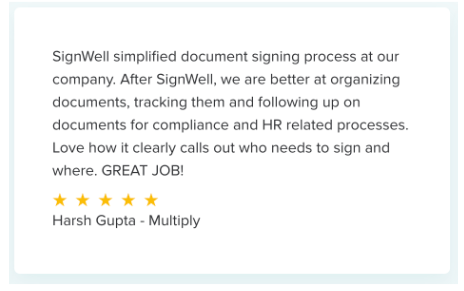
What Are Digital Signatures?
A digital signature, also known as an online signature, is a secure way to verify the authenticity and integrity of a document online. Unlike simple electronic signatures (like typing your name or using a stylus), digital signatures use encryption and certificates to confirm who signed the document and ensure it hasn’t been changed.
Here’s what makes digital signatures different;
- Authentication: Digital signatures verify the signer’s identity using certificates and encryption, ensuring the person signing is who they claim to be.
- Non-repudiation: Once signed, the signer can’t deny their signature, thereby offering legal protection to all parties.
- Integrity: If the document is changed after signing, the signature is automatically marked invalid.
- Legal validity: Digital signatures are fully compliant with laws like the U.S. ESIGN Act and international standards like eIDAS, so your documents are legally binding.
For businesses, digital signatures offer significant advantages over traditional wet-ink signatures, such as faster turnaround times, lower costs, stronger security, and better compliance. You can sign from anywhere, which makes them ideal for industries like accounting, law, real estate, healthcare, and finance. If you’re curious about how they differ, check out our detailed comparison guide on wet-ink vs electronic signatures.
Overall, as more companies move away from paper, the global e-signature market continues to grow, expanding by over 29.18% each year as organizations embrace faster, more efficient ways to sign and manage documents.
How to Create a Digital Signature: Step-by-Step
Method 1: Using SignWell (Recommended)
SignWell is the most reliable and user-friendly way to create and manage digital signatures for businesses of all sizes.
Here’s how you can use SignWell to create professional digital signatures in just a few clicks.
Step 1: Create Your SignWell Account
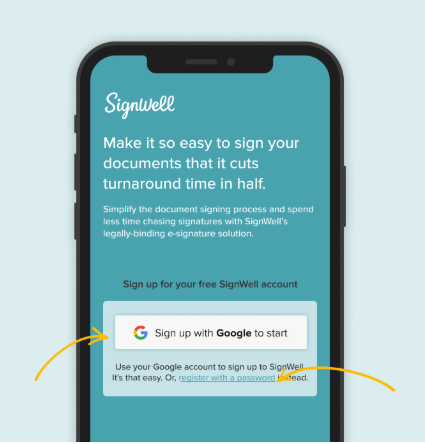
Start by visiting SignWell.com and creating your account. You have two convenient signup options:
- Google Signup: Click “Sign up with Google” and authenticate with your Google account
- Email and Password: Choose “Sign up with email” to create a custom account
SignWell offers a completely free plan with no time limits, allowing you to test all core features before payment. No credit card is required to get started.
Step 2: Create Your Digital Signature
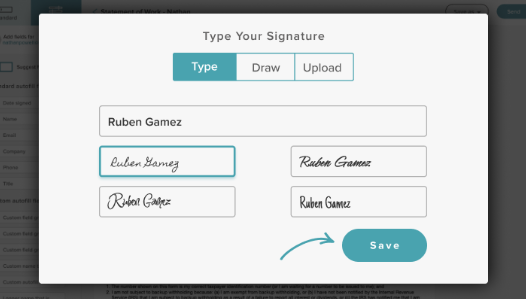
SignWell offers three professional methods to create your digital signature:
- Draw Your Signature: Use your mouse, trackpad, or touchscreen to draw your signature naturally with advanced drawing tools
- Type Your Signature: Choose from professional fonts designed specifically for signatures
- Upload an Image: Import high-quality images of your handwritten signature with automatic optimization
Create multiple signature variations for different use cases and store them securely in your profile.
Step 3: Prepare Your Document for Signing
Upload documents in any format (PDF, Word, Excel, PowerPoint) or use SignWell’s built-in templates. Use the intuitive drag-and-drop interface to place signature fields, date fields, text boxes, checkboxes, and dropdown menus exactly where needed.
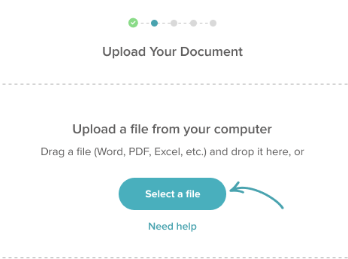
Step 4: Send for Digital Signatures
Add recipients and set signing orders for complex approval processes. SignWell’s customizable email invitations maintain your professional brand while clearly explaining the signing process. Our platform also sends automatic reminders at intervals you choose.
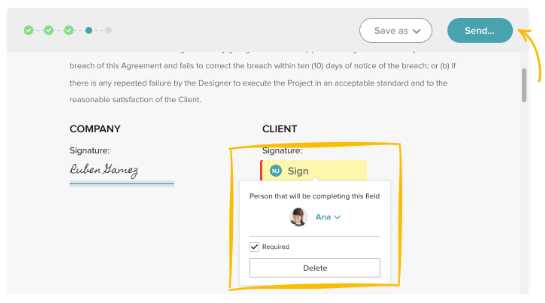
For more insights, read our step-by-step guide on how to create a signing order for seamless document workflows.
Step 5: Track and Manage Signed Documents
Monitor document status in real-time through your dashboard. Every completed signature includes a comprehensive audit trail for legal compliance.

For QuickBooks users, SignWell automatically syncs signed estimates and contracts with your accounting system.
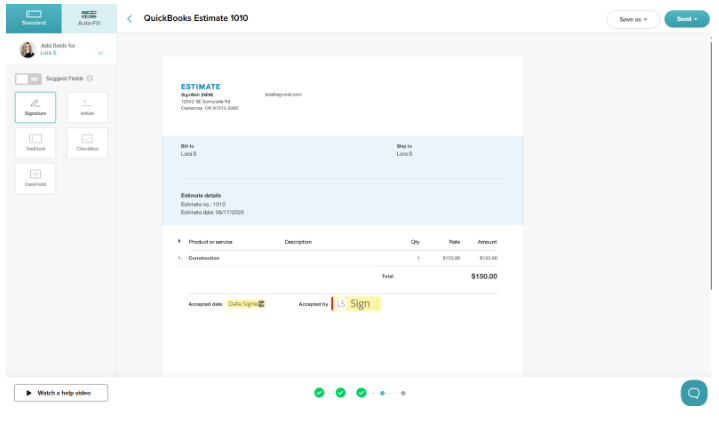
Method 2: Using Zoho Sign
Zoho Sign offers a usable free tier for occasional signing, but it isn’t ideal for teams or high-volume workflows. Its free plan lets a single user send up to 5 envelopes (documents) per month.
Here’s how creating a digital signature works with Zoho Sign:
Step 1: Create an Account
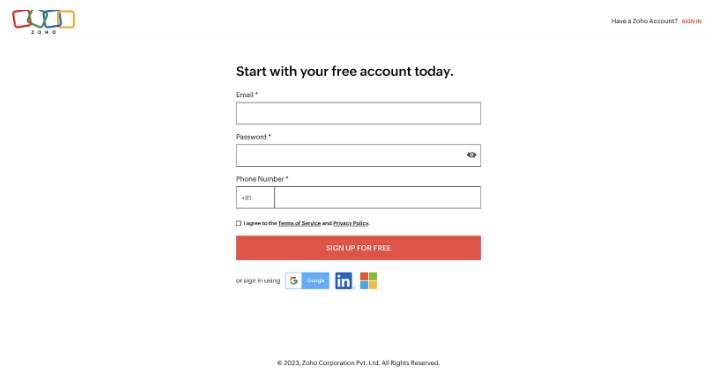
Visit the Zoho Sign website, sign up for a free account with your email, and complete the email verification process. Log in to your dashboard to manage and track documents.
Step 2: Upload Your Document
Click “Send for Signature” or “Upload Document,” then choose the file you want signed. PDFs work best, but Word and other common file types are supported.
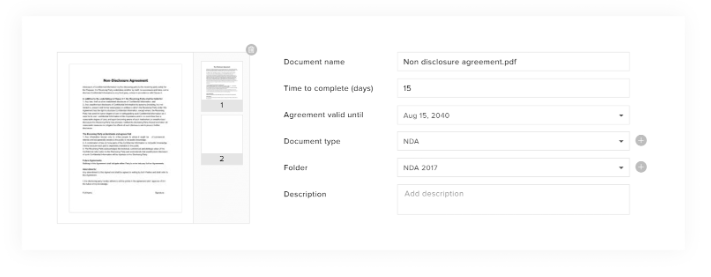
Step 3: Add Recipients and Signature Fields
Enter signer names and email addresses. If multiple people need to sign, add them all and set the signing order. Drag and drop signature boxes, date fields, and text fields where they should appear.
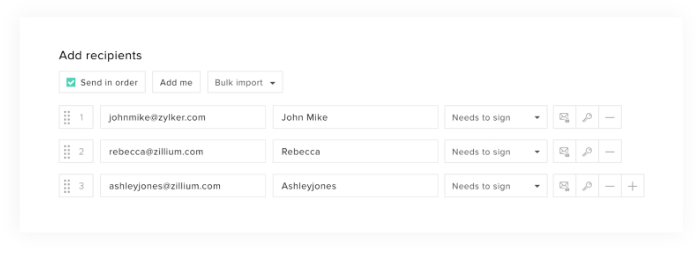
Step 4: Send and Receive a Signed Copy
Click “Send” to deliver the document. Recipients receive an email link to review and sign online. Zoho notifies you when complete, and you can download the signed document with a certificate of completion.
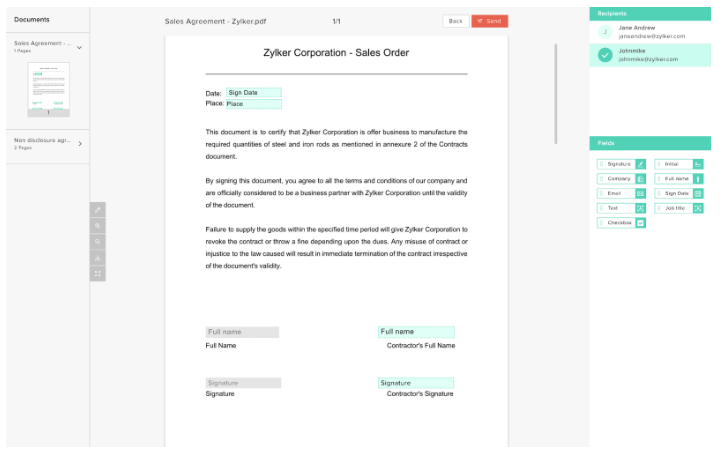
Limitations: Single-user restriction, 5 documents monthly limit, no team collaboration features, limited integrations, and basic tracking capabilities make this unsuitable for business workflows.
Method 3: Using Adobe Acrobat Reader (Built-in Tool)
Adobe Acrobat Reader DC includes basic signature capabilities that work well for simple signing needs without requiring additional software.
Step 1: Open Your PDF Document
Launch Adobe Acrobat Reader DC and open the PDF document you need to sign. If you don’t have Reader DC, download it free from Adobe’s website.
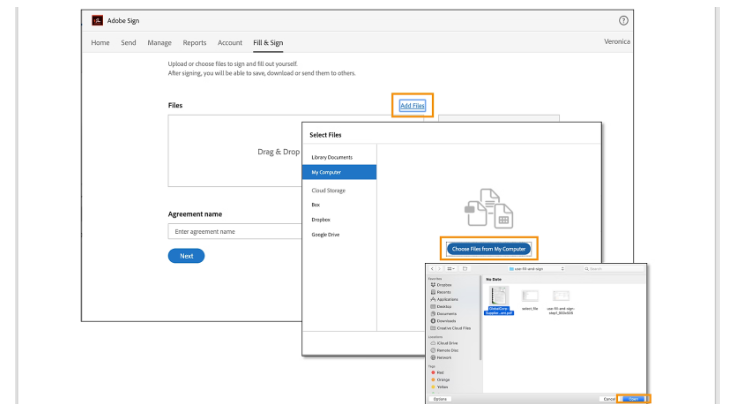
Step 2: Access the Fill & Sign Tool
Click the “Fill & Sign” tool in the right pane, or go to Tools > Fill & Sign. This opens Adobe’s signature interface.
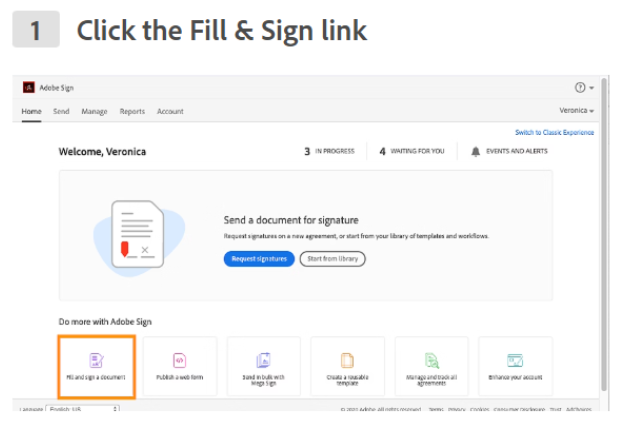
Step 3: Create Your Signature
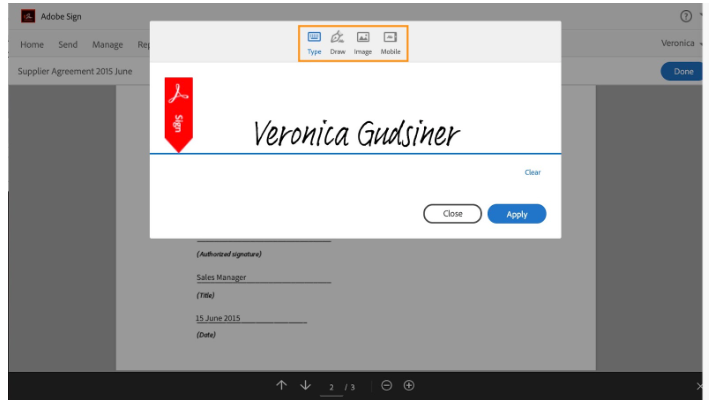
Click the “Sign” icon and select “Add Signature.” Choose from three options:
- Type your signature using Adobe’s built-in fonts
- Draw using your mouse or stylus on the screen
- Image by uploading a photo of your handwritten signature
Step 4: Place and Save Your Signature
Click where you want to place your signature on the document. Resize and position as needed, then save the signed document to your computer.
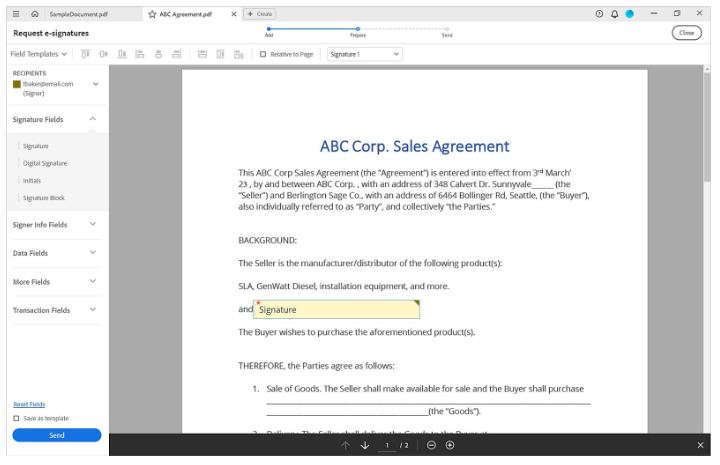
Limitations: Adobe’s built-in tool only works for signing documents you already have. It doesn’t handle sending documents to others for signature, tracking status, or managing workflows. It’s best suited for personal document signing rather than business processes requiring multiple approvals or professional document management.
Why SignWell is the Best Option for Creating Digital Signatures
Creating digital signatures shouldn’t be complicated. When tools are hard to use or require extra steps, it slows everything down. SignWell makes it easy to create secure, legally binding digital signatures in just a few clicks.
Here’s why you should use SignWell:
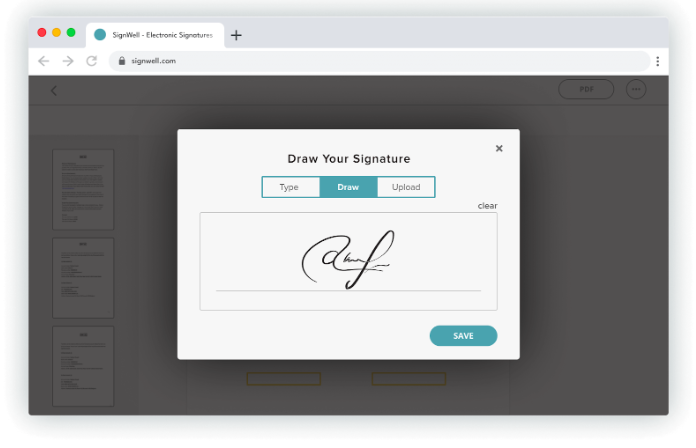
1. Supports Business Workflows With Native Integrations
SignWell is the only e-signature solution with native QuickBooks Online integration, allowing you to send estimates and invoices for signature without leaving your accounting software. This seamless connection eliminates double data entry and creates a smooth workflow from estimate to signed contract to invoice.
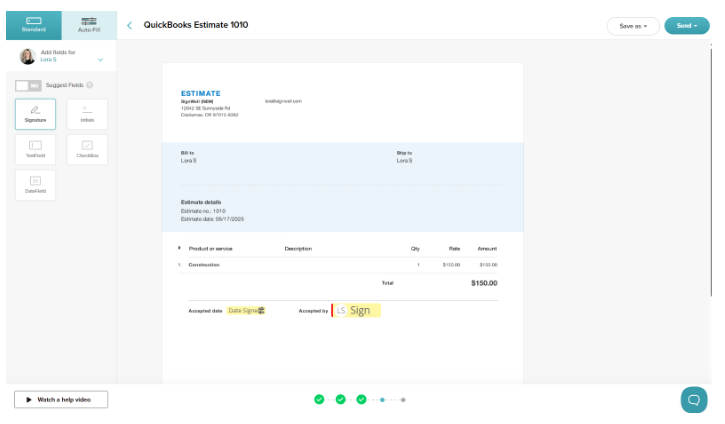
Beyond QuickBooks, SignWell connects with over 5,000 applications through Zapier, including CRM systems, project management tools, and cloud storage platforms. For businesses with custom software needs, SignWell’s API enables seamless integrations that automate signature workflows within existing business processes.
2. Professional Features vs Basic Tools
While basic tools limit users to 3 documents per month, SignWell’s free plan includes unlimited signature requests, making it more generous than even paid basic competitors. SignWell users can create unlimited reusable templates, set up automated workflows, and manage team permissions, features that other tools either don’t offer or charge premium prices to access.
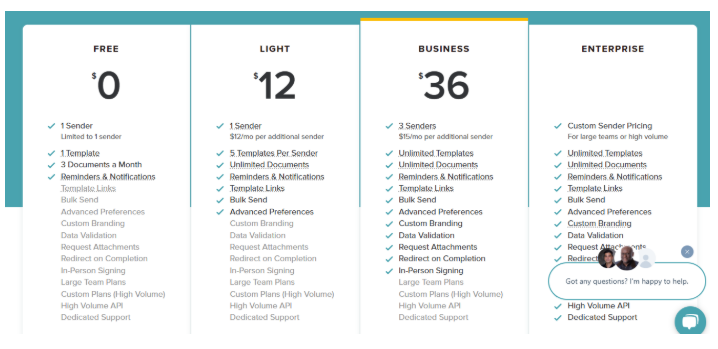
In addition, SignWell’s advanced tracking shows detailed analytics about document performance, signing patterns, and workflow bottlenecks, helping businesses optimize their processes. Basic tools typically provide only minimal status updates without actionable insights.

3. Enterprise-Grade Security and Compliance
SignWell maintains HIPAA compliance for healthcare organizations, SOC 2 Type II certification for data security, and provides comprehensive audit trails that meet legal requirements in all 50 states and internationally, including the ESIGN Act, UETA, and eIDAS standards. The platform operates with 99.99% uptime across multiple data centers, ensuring your business-critical documents are always accessible.
Basic free tools often lack enterprise security features, comprehensive audit trails, or compliance certifications, making them unsuitable for regulated industries or businesses with serious security requirements.
4. More Stable and Reliable Than Basic Tools
As a dedicated e-signature platform, SignWell receives regular updates and maintenance to ensure compatibility with changing business needs and security requirements. The platform is built specifically for document workflows, providing reliability that web-based basic tools can’t match.
Additionally, we offer professional customer support and dedicated developer assistance for API users, while basic tools typically provide only community forums or limited email support.
5. Advanced Features for Growing Businesses
SignWell’s bulk sending capabilities allow you to send the same document to multiple recipients simultaneously, perfect for employment agreements, policy updates, or client contracts. Our platform enables document signing and sending from anywhere, while our custom branding options maintain your professional appearance throughout the signing process.
Automated workflow features can trigger actions based on signing events, like sending welcome emails after employment contracts are signed or creating project folders after service agreements are executed. These advanced capabilities help businesses scale their operations without increasing administrative overhead.
Common Digital Signature Mistakes to Avoid
Even with the best intentions, many businesses make avoidable errors when creating digital signatures.
Here are the most frequent mistakes and how to prevent them:
- Using Poor-Quality Signature Images: Blurry, pixelated, or poorly cropped signature images look unprofessional and may be questioned for authenticity. SignWell automatically optimizes uploaded signatures and removes backgrounds for a clean, professional appearance.
- Skipping the Test Run: Sending documents without testing the signing experience first leads to confused recipients and delayed completions. Always preview your document flow before sending for signatures to ensure fields are properly placed and instructions are clear.
- Incorrect Field Requirements: Making optional fields required (or vice versa) frustrates signers and can stall important agreements. SignWell’s intuitive interface clearly distinguishes between required and optional fields during setup.
- Providing Inadequate Instructions: Assuming signers know what to do without clear guidance causes unnecessary back-and-forth. Include specific instructions about what needs to be reviewed, signed, and any additional information required.
- Ignoring Mobile Optimization: Most digital signatures happen on mobile devices. Documents that aren’t mobile-friendly create poor user experiences and abandoned signings. SignWell automatically optimizes all documents for seamless mobile signing.
- Wrong Signing Order Setup: For multi-party agreements, incorrect signing sequences can send documents to the wrong person at the wrong time, creating confusion and delays. Plan your approval workflow carefully.
Best Practices for Creating Digital Signatures
1. Ensure Legal Compliance
When choosing a digital signature software, it’s important to understand the laws that make your documents legally binding. In the U.S., the ESIGN Act requires that signers give consent, receive copies of signed documents, and that businesses keep proper records. In the EU, the eIDAS regulation sets similar standards for digital signatures.
Some industries also have extra requirements. For example, healthcare organizations need HIPAA-compliant solutions, financial services must meet strict audit standards, and government contractors often need advanced authentication.
2. Choose Professional-Quality Signature Tools
Select a trusted digital signature platform with transparent privacy policies, clear pricing, and a strong track record. Look for features like comprehensive audit trails, data encryption, and uptime guarantees that keep your documents secure and accessible.
Make sure the tool integrates with the apps you already use and can scale as your business grows. While free or basic tools might work short-term, upgrading later can mean extra costs, retraining your team, and rebuilding your workflows.
3. Design Clear Signature Workflows
Set up a clear signing order for documents that need multiple approvals, so each person is notified only when it’s their turn to sign. Include simple, step-by-step instructions to guide signers on what to review, where to sign, and any extra details they need to provide. Check out our guide to creating a digital signature workflow to learn how to organize approvals and streamline your signing process.
For documents you send often, use templates to save time and ensure consistency. Templates help you stay legally compliant by including all the required fields and language, so every document you send is accurate, complete, and ready to sign.
4. Maintain Organized Document Management
Keep your signed documents easy to find with a clear, consistent structure. Use folders to separate files by client, project, or document type, and apply simple naming conventions like “2025-01-15_ABC-Corp_Service-Agreement” so you can locate records quickly, even years later.
Set up regular backups and define how long you’ll retain signed documents based on your legal or business needs. Some industries have strict retention rules, so make sure your process meets those requirements.
5. Monitor and Follow Up Effectively
Use automated reminders to keep your signing process on track, send gentle follow-ups after a few days, then weekly for standard documents. For urgent agreements, daily reminders can help move things along faster.
Have a clear escalation process for documents that stay unsigned too long. This could mean a quick phone call, an alternate delivery method, or looping in a manager—whatever ensures important agreements don’t stall.
Track key metrics like average time to signature, completion rates, and common bottlenecks. These insights help you refine your workflow and close deals faster.
Create Secure, Professional Digital Signatures with SignWell
Paper-based approvals slow everything down, from closing deals to onboarding clients. With more businesses moving online, having a reliable and compliant way to sign documents isn’t just convenient, it’s essential.
SignWell makes it easy to create and manage digital signatures that are legally binding and secure. With features like audit trails, smart fields, templates, and compliance with ESIGN, UETA, and eIDAS, you can streamline every step, from setup to final approval, without worrying about delays or legal risks.
Start building a faster, more organized signing process today. Try SignWell for free, no credit card required.
Get documents signed in minutes.
Simple, secure, affordable e-signatures
by  .
.
Get Started Today
businesses served
customer support satisfaction
documents signed